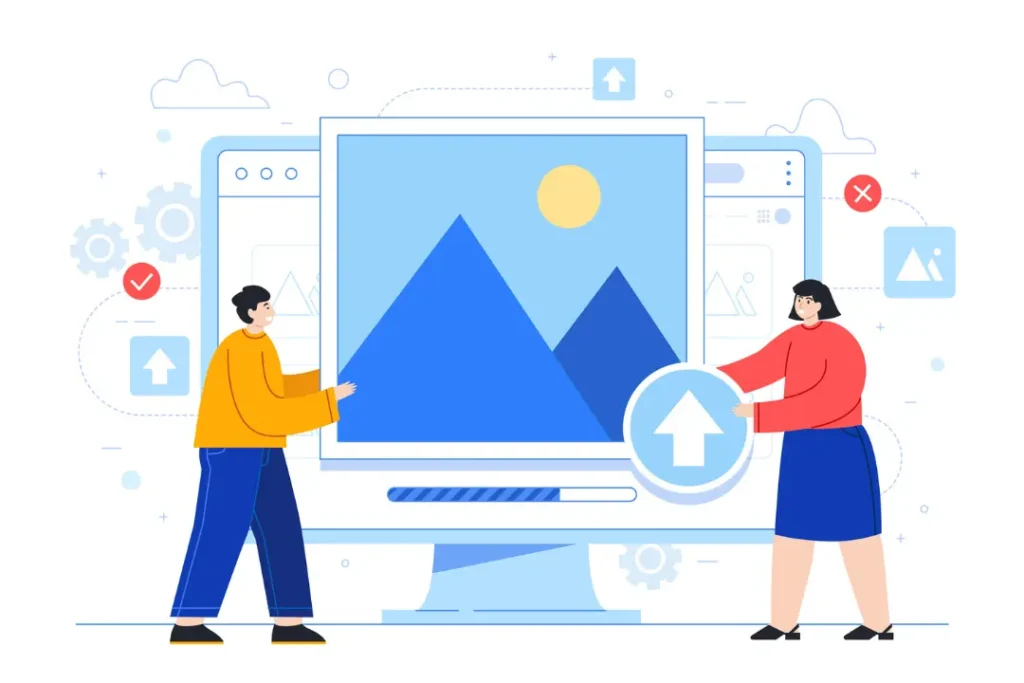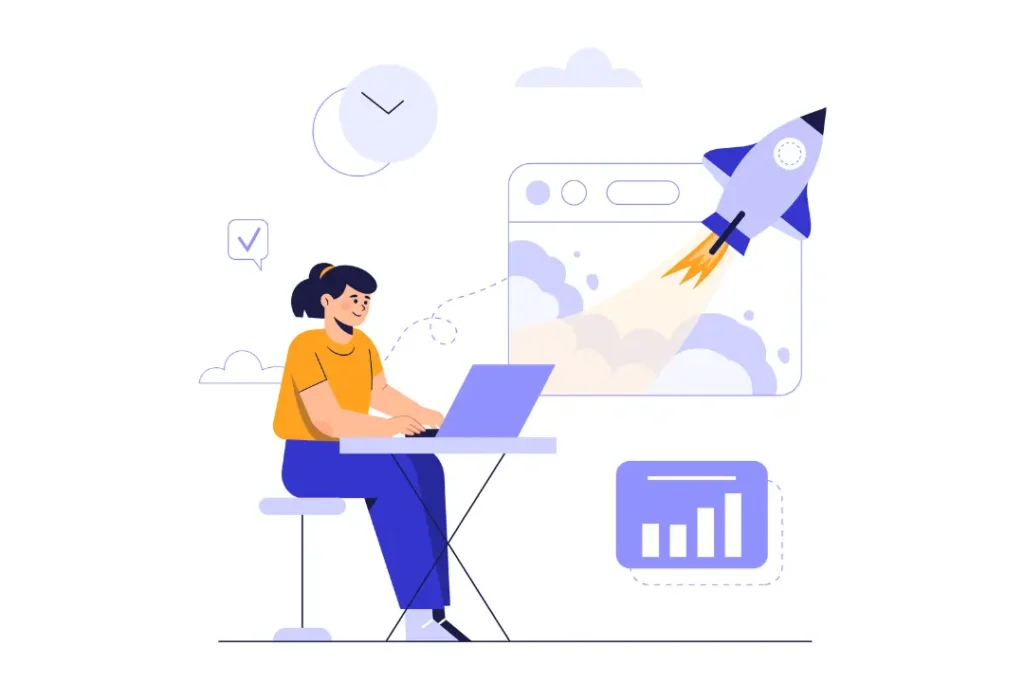Contents
If you want to rank higher on Google, you need to know about On-Page SEO.
In this blog, we will give you an in-depth overview of the various factors involved in performing On-page SEO. You will also learn how to optimize these factors to derive maximum results.
What is On-Page SEO?
On-page SEO, also known as On-site SEO, is the practice of optimizing the content and structure of a web page to rank higher and earn more relevant traffic from search engines.
This technique refers to both the content and HTML source code of a page that can be optimized, as opposed to Off-page SEO which involves links and other external signals.
It includes everything from choosing the right keywords, writing engaging content, using descriptive tags, and improving your site speed. Many businesses, particularly those utilizing professional SEO services in India, benefit greatly from these techniques.

But first, Why is On-Page SEO Important?
On-page SEO is crucial for your website’s success!
It helps you optimize your content, keywords, titles, headings and images to rank higher on search engines and attract more visitors. On-site optimization also improves your user experience, making your site more engaging, relevant, and trustworthy.
With On-page SEO, you can boost your online presence and grow your business faster than ever! Many companies are turning to an SEO agency in India for assistance in maximizing these efforts.
What are On-Page SEO techniques?

We Share with you the best On-page SEO Techniques
Write Original and Detailed Content
Detailed, non-generic content ranks higher on Google. The quality and relevancy of your content will let the search engine know you are an authority on the topic. Thus, it will give your website much coveted real estate on its search engine results page.
It will also help you increase your audience’s dwell time on the website (see also “Focus on Boosting Your Website’s Dwell-Time” section) and gain all too important values of loyalty, trust and credibility from your audience.
To recap, fresh and in-depth content helps you increase:
- Website dwell time.
- SERP Ranking
- Loyalty, trust and credibility with the audience.
Some tips to write high-quality content:
- Perform a thorough keyword research
- Analyze the search intent
- Go into as much detail as you can without generating unnecessary fluff
- Be sure to use your unique voice and perspective

As you can see the very first paragraph contains the primary keywords: “mom blogging” and “mom blogs”. It clearly tells the main question the blog will answer and how. Readers know what to expect and trust the writer to know what they are writing about.
Looking at the table of contents one can clearly see how detailed the blog is. Gone are the days when Google required you to write blogs for a 5 year old. Now, it wants you to write detailed guides to rank well. .

The writer is also aware of the search intent of the reader. Her readers want to know the best mom blogs, learn from them and start their own. That is why she has included a detailed analysis of important statistics from featured mom blogs. These help demonstrate which topics and techniques do well.
This is also a subtle signal to the reader that she knows what she is talking about. As you can see, the blog manages to acquire credibility in the first few paragraphs. The reader is sure to stay hooked till the end!
Have a Solid Keyword Placement Strategy
Keywords are special words/phrases that describe the topic of your content and help search engines understand what it is about. By using relevant keywords in strategic locations, you can signal what your content is about and match the search intent of your target audience.
This way, you can increase the chances of ranking higher on the Search Engine Results Pages (SERPs) attracting more organic traffic to your website.
Important places to put keywords in:
- Title Tag: This is the main headline of your content that appears in the search results and browser tabs.
- Meta Description: This is the snippet of text that appears below the title tag in the search results.
- URL: This is the web address of your content that also appears in the search results.
- Headings: These are the subheadings of your content that help organize it into sections and guide the readers.
- First Paragraph: This is the introduction of your content that hooks the readers and sets the context for the rest of the content.
- Image Alt Text: This is the text that describes the images in your content and helps search engines and visually impaired users understand them.

This is the top ranking blog for the search term “grow social media organically”. As you can see, the target keywords “social media” and “grow organically” are in the title of the blog.
Going further down, you will see its headings contain keywords such as “visual content”, “data”, “hashtags”, “live events”. All of these words and phrases are semantically connected to the primary keyword “social media growth”. These semantically related keywords show Google that your content contains in-depth information.
This strategic placement of primary and secondary keywords helps Google get a better understanding of what the content is about. If it finds the content relevant to the topic, it will automatically rank it higher.
That is why, quality content with the right strategic placement of keywords is the key towards generating blogs with consistently high rankings on Google.
Optimize Your Images With Alt Tags, Title Tags And Captions
Image optimization is the process of reducing the file size and improving the quality of the images on your website. Image optimization can help you achieve several benefits such as:
- Faster loading speed
- Better accessibility
- Higher user engagement
- Improved ranking

How to optimize images for the web?
- Choose the right format for your images. For example, JPEG is good for photos, PNG is good for graphics, and SVG is good for icons and logos.
- Resize and compress your images to reduce their file size and loading time. You can do this online or manually. A good rule of thumb is to keep your images under 100 KBs if possible.
- Add alt text and title text to your images to describe what they are and why they are relevant to your content.
- Include captions for your images to provide more context and information to your readers. Captions can also help you rank for long-tail keywords (keyword phrases made of 3-5 words) and increase your click-through rate.
Focus on Boosting Your Website’s Dwell-Time
Dwell time is the amount of time that a user spends on a web page before returning to the search results. It is an important factor for on-page SEO because it indicates how engaging and relevant your content is for the users.
A high dwell time means that your content is satisfying the user’s query and providing value, while a low dwell time means that your content is not meeting the user’s expectations and needs improvement.
How to increase dwell-time?
- Write engaging introductions that capture the attention of your readers and make them want to read more. Use questions, statistics, anecdotes, or hooks that relate to your topic and audience. (see also example in “Write Detailed and Original Content” section)
- Use multimedia elements such as images, videos, audio, or infographics to enhance your content and make it more appealing.
- Break up long paragraphs into shorter ones that are easier to read and scan. Use subheadings, bullet points, lists, or quotes to organize your content.
- Add internal links to other relevant pages on your website that provide more information or value to your readers.
- Provide clear calls to action that tell your readers what to do next after reading your content. Whether you want them to subscribe, buy, download, share, or comment, make sure you have a clear and visible button or link that invites them to take action.
Section 6: Passage Ranking Optimization on Google
Google has a separate dialogue box, “People also ask:”, to provide additional info. This dialogue box presents information related to the search query. It takes different passages from multiple sites and uses them to answer all related questions any user might have.
Passage ranking is important for On-Page SEO because it helps you optimize your content for long-tail keywords and answer specific questions that your audience may have.
How to perform passage ranking optimization?
- Use clear headings and subheadings to organize your content and make it easy for readers and Google to scan.
- Write concise and relevant sentences that convey your main points and avoid filler words or fluff.
- Answer common questions that your target audience might have about your topic or niche, and use keywords that they would search for.
Section 7: Pay attention to the Featured Snippets
Featured snippets are short excerpts from web pages that appear at the top of Google’s search results. They provide quick answers to users’ queries without requiring them to click on a link.
Featured snippets are important for On-Page SEO because they can help you rank higher, attract more clicks, and establish your authority on a topic.
How to optimize content for featured snippets?
- Use question-based keywords that match the intent of your target audience. For example, if you are writing about how to make a cake, use keywords like “how to make a cake”, “what ingredients do I need for a cake”, etc.
- Provide clear and direct answers to the questions in your content. Ideally, your answer should be in the first paragraph of your content, and it should be concise and accurate.
- Format your content with lists, tables, or steps, depending on the type of featured snippet you want to rank for. For example, if you want to rank for a list snippet, use an ordered or unordered list to organize your content.
Congratulations, You Have Now Graduated in On-Page SEO!
We recommend using this blog as a guide for exploring On-page SEO even more deeply. There are whole books written on the art of performing SEO, so don’t be afraid to delve deeper into the topic (P.S. make sure the books are up-to-date as Google keeps tweaking its algorithm).
But wait, you say you are ready to get your hands dirty and optimize your own website? To rank on top in Google Search Results? Well, don’t let us be the one to stop you.
Download our On-page SEO checklist to get started immediately
All you have to do is check each task on the checklist and your website should be well on its way to Search Engine Results Page (SERP) stardom. Also, recommend you to get best SEO services in India to get the top-notch On-Page services.


